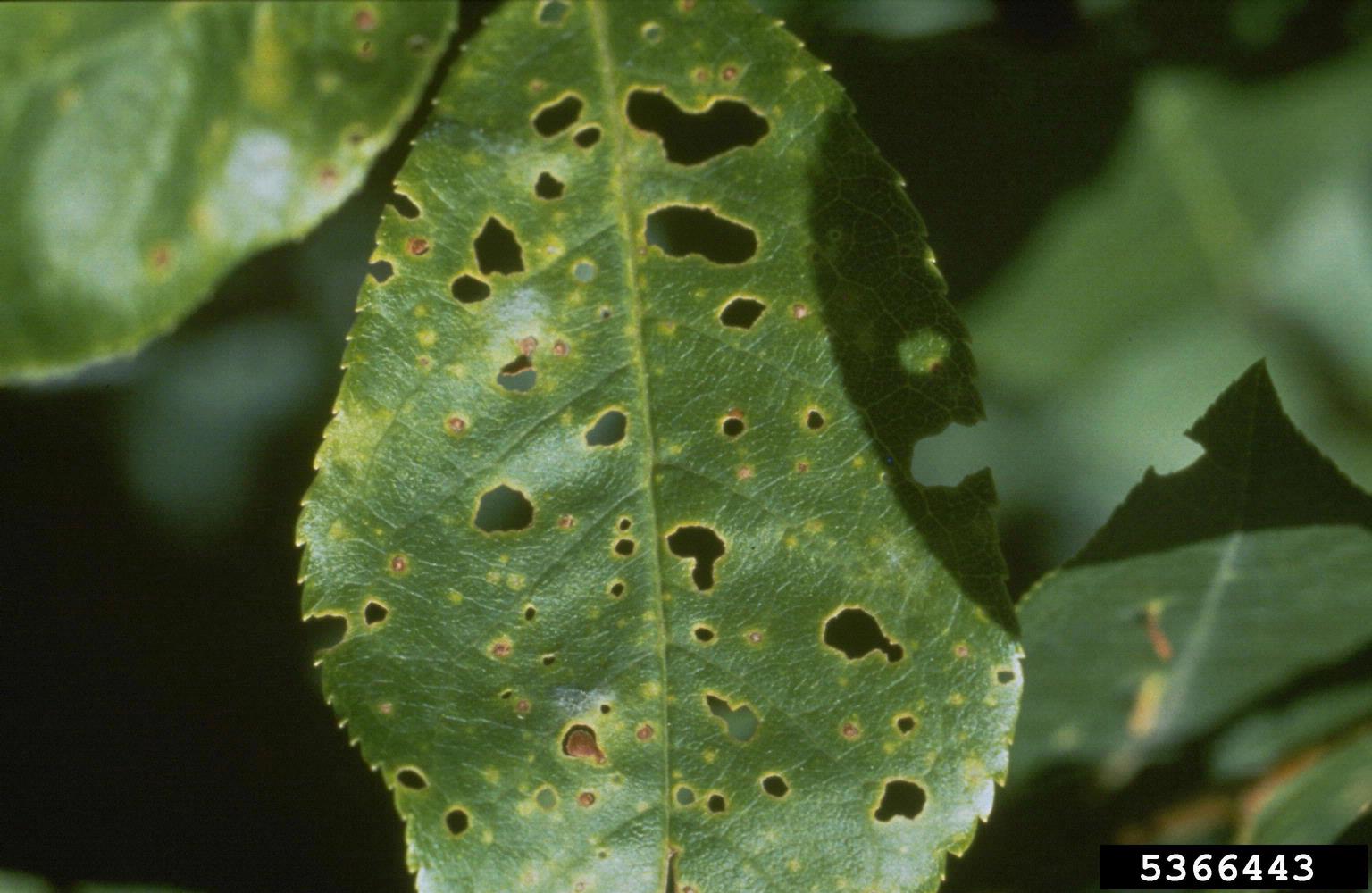Apricot Shot Hole Control: How To Treat Apricots With Shot Hole Disease


Shot hole disease can attack several types of fruit trees, but apricot is especially vulnerable. This fungal infection, previously called Coryneum blight, favors wet conditions, especially in the spring, and causes damage to buds, leaves, shoots, and fruit. Preventative steps are the best measures for managing this disease.
Identifying Shot Hole on Apricot Trees
Apricot shot hole fungus is Wilsonomyces carpophilus. It overwinters on buds that are infected and also on twigs. The spores on these parts of the tree can be transferred during winter and spring rains and when water splashes up from the ground. Those spores need 24 hours of moisture to set in and cause infection, so wet and humid conditions tend to lead to the spread of this disease. Apricots with shot hole disease may show a variety of symptoms, but the name comes from spots that develop on the leaves and then fall out, leaving round little holes behind. The first signs of apricot shot hole fungus disease on trees in the spring are purple spots on the new shoots, buds, and leaves. The spots on leaves that become holes begin small and often have a yellow or light green margin. Severe infections will cause the leaves to drop early, sometimes as early as in the spring. Extensive infection also begins to affect the fruit as it develops, causing scabby, rough spots that are concentrated on the top of the fruit and that may flake off and leave rough patches behind.
Apricot Shot Hole Control
Treating apricot shot hole disease once it has become advanced is difficult. The best measures begin with prevention. The disease is most common in wet conditions, so making sure trees are well spaced for airflow is crucial, as is regular apricot pruning to allow for circulation between branches. Avoid irrigation that causes water to splash up onto branches. If you do see signs of the disease, the best way to treat it is to apply an appropriate fungicide during the dormant season. This can help to minimize or prevent the disease from infecting healthy plant material in the spring and during the rainy and wet season. This can be done just after the leaves fall or right before buds break in the spring. You should also prune off and destroy and heavily diseased branches or twigs.
Gardening tips, videos, info and more delivered right to your inbox!
Sign up for the Gardening Know How newsletter today and receive a free copy of our e-book "How to Grow Delicious Tomatoes".

Mary Ellen Ellis has been gardening for over 20 years. With degrees in Chemistry and Biology, Mary Ellen's specialties are flowers, native plants, and herbs.
-
 Creative Ideas For Plant Containers: 7 Ways To Save Money And Add Charm To A Garden
Creative Ideas For Plant Containers: 7 Ways To Save Money And Add Charm To A GardenIf you are looking for great ways to add personality to your container gardening – and even save yourself some money – then try these creative ideas for plant containers
By Mary Ellen Ellis
-
 How To Make A Bouquet Garni Or Herb Bundle For Cooking
How To Make A Bouquet Garni Or Herb Bundle For CookingIf you’re a great cook, you may have made an herb bundle before. If this is a new idea, learn how to add sparkle and interest to your dish with a bouquet garni.
By Amy Grant